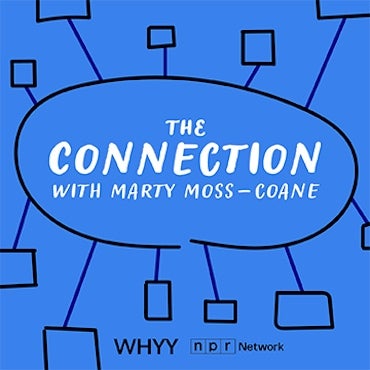A small patch of old growth forest with big lessons in conservation
Listen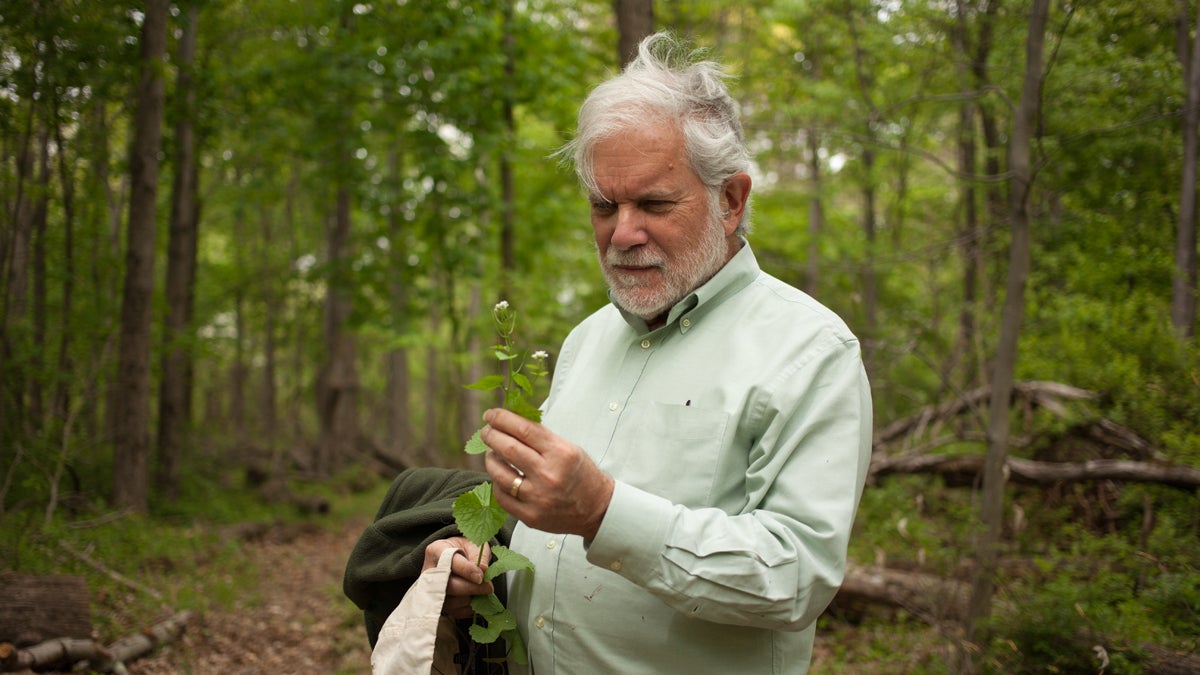
Steven Handel plucks garlic mustard, an invasive plant, on a visit to Hutcheson Memorial Forest. He says invasives are lessening the biodiversity of the forest. (Irina Zhorov/WHYY)
Less than 50 miles from New York City, tucked into a bucolic corner of New Jersey’s expansive sprawl, stands a 65-acre plot of ancient forest.
It’s “what America was like the day before Columbus,” said Steven Handel, a plant ecologist at Rutgers University and Director of the Hutcheson Memorial Forest, which Rutgers owns.
The approach to Hutcheson, through old farm fields that have been allowed to return to meadows and young forests, serves as a buffer from developed lands. The ground is pockmarked with deer footprints. Handel comes up to a 10-foot deer fence, and enters the enclosure into second growth woods.
“We’re about to enter the old forest. Be still my heart!”
When he crosses into the old growth, the trees are suddenly bigger. Widely scattered, large oaks dominate the landscape. The understory is relatively sparse “because of the years of deer damage,” Handel said. He grabs at plants as he walks, pulling up invasive species like garlic mustard.
When Rutgers acquired the forest, in the 1950s, the oaks stood more than 90 feet tall and some were more than 300 years old. Beneath them bloomed white-flowered dogwoods, and on the ground grew a sea of maple-leaved viburnum shrubs and mayapples. But for decades, the deer ate everything up. Now, there’s barely any underbrush, no young oaks to succeed the old ones.
The forest came to Rutgers from the ancestors of a Dutch family that bought the land in 1701. They logged and farmed most of their holdings but “this one parcel was either left as an afterthought, they didn’t need it. Or family members just liked the huge oaks,” Handel said. It’s never been cut down.
A carpenters’ union, The United Brotherhood of Carpenters and Joiners, helped raise money for the land – it’s named after one of the union’s presidents – but it was in the name of conservation. It was deeded to Rutgers with instructions to preserve the forest “free from interference by man” in perpetuity. Scientists could study it, but otherwise had to leave nature to do her thing.
But something went wrong.
“It’s been a sad 50 years,” Handel said.
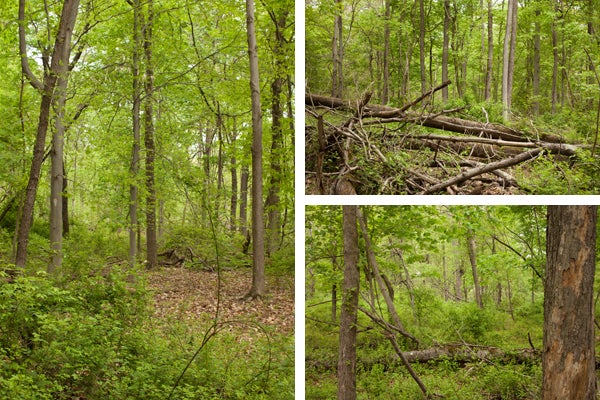
The Hutcheson Memorial Forest and surrounding second growth woods have changed since the 1950s, when they were officially preserved. They’ve lost biodiversity and have been overrun with deer, which eat the underbrush. (Irina Zhorov/WHYY)
Evolving understanding of ecosystems
In the 1950s, ecologists thought without human interference, healthy ecosystems would stay healthy. Mother Nature was in balance, they thought, and humans messed that up. But Hutcheson, untouched, changed rapidly.
“If you were to press me I would say it’s not as good as it used to be,” Handel said. “The biodiversity has faded. We have a higher proportion of a few invasive species, not as many of the native wildflowers and shrubs that we once had.”
Many preserves across the country are experiencing similar problems – loss of native species and biodiversity, loss of wildlife habitat.
Meanwhile, ecologists’ understanding of ecosystems has flipped. Most scientists no longer believe in this ideal of nature in equilibrium. The new paradigm in ecology holds that ecosystems are dynamic, constantly – even if slowly, in flux.
“There was a widespread change in the ’70s, and ’80s and ’90s in that kind of thinking, but now that’s really accelerated with climate change, with invasive species, and with land use change,” said Tom Spies, a researcher with the U.S. Forest Service. “That’s sort of been a triple whammy, in a sense, to the idea of balance of nature.”
That evolution in thinking and the added stressors have changed how on-the-ground conservation works, too.
“There is increasing recognition that if we really want to maintain the native communities and species of those types of areas, that some form of active management is needed,” Spies said.
Instead of being hands off, managers across the U.S. are now trying hands on approaches to help wild areas fight degradation. They’re pulling up invasive species, reintroducing fire, planting native flora. The idea is to build resilience within ecosystems, and to help recreate the processes that shaped the landscapes in the first place.
(It’s not always natural processes that shaped the landscape, either. For example, at Hutcheson, scientists found evidence of cyclical fires in the forest, likely set by Native Americans before European settlement. Evidence of the fires stopped in the early 1700s, when the Dutch family acquired the land. The fires were a management tool that helped determine the forest’s character.)
Active management can be challenging. “It can be expensive,” Spies said. It also requires more planning and decision making about how much to intervene and what types of interventions make sense. “Where do you let nature take its course, where do you nudge it along with management activities” are questions still up for debate, Spies said.
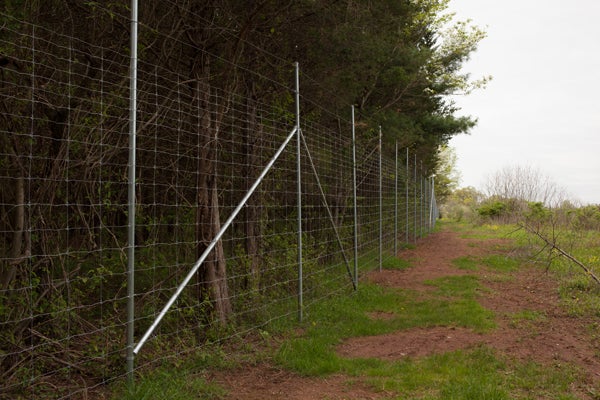
The new deer fence encloses the old growth Hutcheson Memorial Forest as well as some second growth woods. It’s the first major human intervention in the forest. By reducing damage from deer, researchers are hoping to recover some biodiversity. (Irina Zhorov/WHYY)
Catching up
Hutcheson Memorial Forest’s first major intervention was the deer fence, put up last year. At the time, the forest supported about 100 deer per square mile, up from historic estimates of 2-3 animals in the same space. An alum funded the $200,000 project. Ninety students walked through the enclosure in a line to drive the deer out.
Steward Pickett, a researcher at the Cary Institute of Ecosystem Studies who taught at Rutgers in the ’70s and ’80s, said it’s a good thing it’s finally up.
He said some people wanted to manage the forest more actively decades ago, but human intervention was still taboo in public discourse. Ironically, Hutcheson’s own deterioration helped change that, he said.
“Just the fact that the forest changed in unexpected ways was a big contribution to helping establish the new nonequilibrium paradigm,” Pickett said.
Conservation area managers are still navigating the implications of a model that stipulates constant change. Ongoing scientific research at Hutcheson may help.
But its strict deed also serves as a lesson in legal models. “The moral of this story is that when you set up a conservation situation you should always leave flexibility for new knowledge and for people to actually be able to make adaptive management decisions, and that kind of philosophy is new,” Pickett said.
Handel said these days he interprets the deed’s no interference clause to just mean there shouldn’t be any logging. He sees his charge as saving the forest. “Very few places on the East Coast look like this. It scares me a little. Because I know in the past it was richer, in terms of number of plant species, number of stems. And we hope with this effort with the fence we can try to get back in some ways what was here for hundreds of years,” he said.
He stood by an almost fully decomposed tree with tender shoots sprouting from what used to be its trunk. He pointed out a native vine called Virginia creeper and a little flower called spring beauty. Then he saw some more of the invasive garlic mustard and ripped it out. “There, I’ve saved the forest,” he joked.
His joke betrayed the immensity of the task. Even, or perhaps especially, for a little urban forest like Hutcheson.
Researchers are going to observe what happens without the deer, and decide on next steps, depending on their findings. Dealing with dynamic ecosystems is a lot of trial and error.
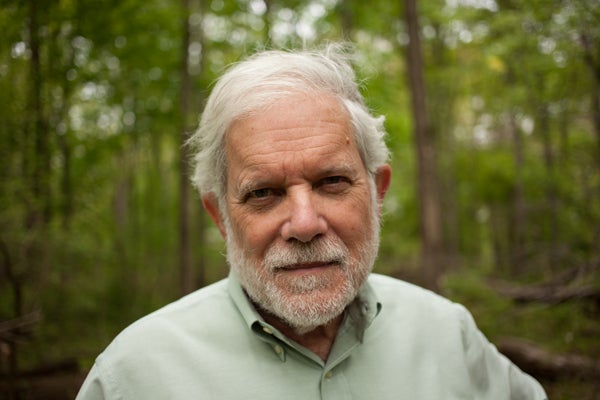
Steven Handel is the Director of the Hutcheson Memorial Forest. He sees his role as “saving” the forest. (Irina Zhorov/WHYY)
WHYY is your source for fact-based, in-depth journalism and information. As a nonprofit organization, we rely on financial support from readers like you. Please give today.
